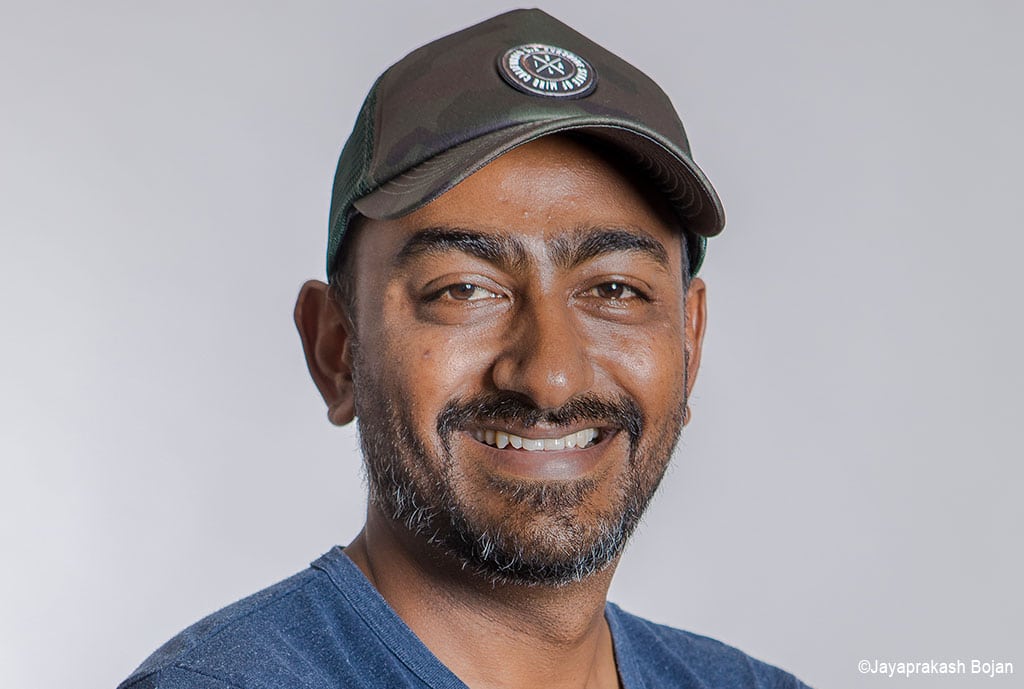We are very pleased and thankfull to introduce to you the new ambassador of BOS Germany. Jayaprakash Bojan won the National Geographic Nature Photographer of the Year in 2017 with the picture of a male orangutan standing in a river. His pictures are well known to orangutan-friends all around the world.
In the interview, he talks about his passion, what impresses him and how his haunting orangutan pictures were created.
Welcome in the family of BOS. Thank you for your commitment for the orangutans. With your pictures you touch many people and make them aware of the situation of the critically endangered primates. Now you are an ambassador for BOS Germany. What does that mean to you?
I AM very EXCITED AND HUMBLED at the same time to be asked to represent BOS Germany as an ambassador. It’s an honor! Over the last few years, I have been trying to influence and educate people with my photo stories on the orangutans, their disappearing rainforests and their challenges. I think with this partnership with BOS, which is the largest and most impactful orangutan conservation organization, I can now make a bigger impact with my pictures and stories and take it to a larger audience across the world.
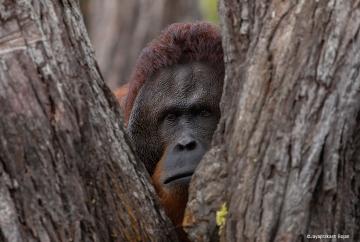
In 2017 National Geographic awarded you for the picture of a dominant male orangutan with the prize Photographer of the year. What is the story behind this picture?
I fell in love with primates, specially the orangutan, when I first saw them in a zoo in Singapore. That was the trigger for me to travel to Borneo to see them initially. In late 2016 I was in Kalimantan searching for orangutans from a boat on the river. One morning I met one of the local rangers who told me he had seen a male often venturing into deep waters, which was very unusual for orangutans since they are primarily arboreal. With their help I spent days searching and waiting to see the orangutan in the river and one fine morning it all happened. And the rest was history. Both National geographic and BBC published my series. If you have seen the pictures you would know what I am talking about.
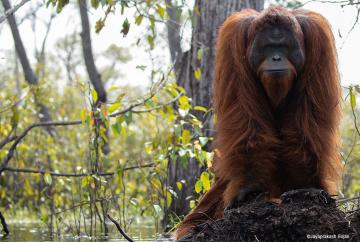
You are travelling around the world, shooting very intensive photos of wildlife and animals in remote places. But you have a special link to orangutans. Why? What is the special bond between you and the red primates? Why are they fascinating you?
In general, I love primates and my love affair with the red apes happened when I was in a river neck deep in water with my camera and a male orangutan walking with his hand up in the air in the crocodile infested waters. While I tried my best to compose some pictures that could translate my feelings at that moment in the river with that orangutan, I don’t think I have the words to express how I felt. It was a godly experience! They are so much like us in their behavior if you have watched them and they are extremely sensitive and intelligent. Sometimes when I am taking pictures, I talk to them like I am speaking to another human. I know it sounds silly but that‘s just me.
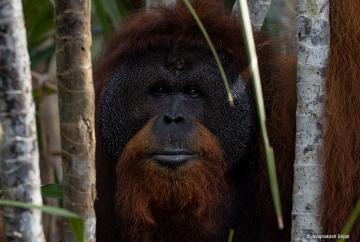
What must be done to help the orangutans?
Over the years we have lost about 100.000 or may be more orangutans to habitat loss and illegal wildlife trade. I have seen Borneo before and after big forest fires and it hurts to see their homes destroyed. For me it’s critically important to save the lowland rainforests from being destroyed, in order to save the orangutans and the thousands of other species of flora and fauna that can only be found in Borneo. Conservation is not possible without the local government support and more importantly without the involvement of local villages and communities. The last aspect is funds. That’s key in today’s situation. It’s impossible to do large scale conservation without money and I want to take this opportunity to thank people across the world who have always generously supported conservation over the years.
So that people can get to know you better: How did you become a photographer?
I grew up in the hills in Nilgiris, Tamilnadu, India surrounded by a lot of wildlife. I started photography as a hobby a decade ago and one day a few years ago decided to quit my 18-year corporate journey to pursue my passion for nature, wildlife and photography. I am now a fulltime photographer and spend most of my time in shooting conservation and environment related photo stories. I also teach photography and speak at schools and institutions to encourage people to fall in love with wildlife and care for them.
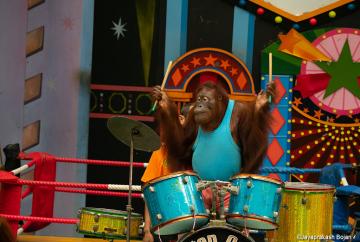
Why did you decide to dedicate yourself to nature photography?
When I started my journey it was all about taking beautiful pictures of everything I saw but over a period of time as I travelled more, I felt more at home with nature and just being out there in the wild made me happy and content. Now I am more focused on story telling that can make a positive impact to nature and wildlife and it’s no longer about just taking beautiful pictures.
What is your favorite moment as a photographer?
One of my favorite moments has been watching and photographing an Orangutan mother and her newborn baby and their relationship. It’s a divine and unforgettable experience.
What is your biggest inspiration?
As a photographer I get a lot of visibility because people across the world get to see my photo stories through social media, exhibitions and other channels. But the true heroes are those in the front line who are out there day in and day out slogging it out to save the forest and the species. There are so many people and inspiring stories from people I have met in the field who are my inspirations. For example, I met this guy in Borneo who has knife slashes all over his body because he was fighting the logging mafia from destroying the forests. There are many unsung heroes the world has not seen or heard off.
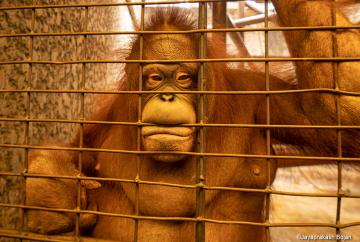
As a nature photographer you have traveled all over the world and have faced lots of environmental issues. What makes you sad and what gives you hope?
It makes me sad to see forests, rivers and oceans being destroyed across the world but I am optimistic that we can still save what’s left of this beautiful world. Along my journey I meet so many wonderful people who still care for the earth and so many unsung heroes who are fighting to save our forest, animals, rivers and oceans. That makes me hopeful.
What is your next project?
South east Asia has some of the most endangered primates in the world. While I continue to focus on orangutans and environment stories, I am also working on a book on primates of south east Asia. So many more primates to find and photograph before I can publish.
